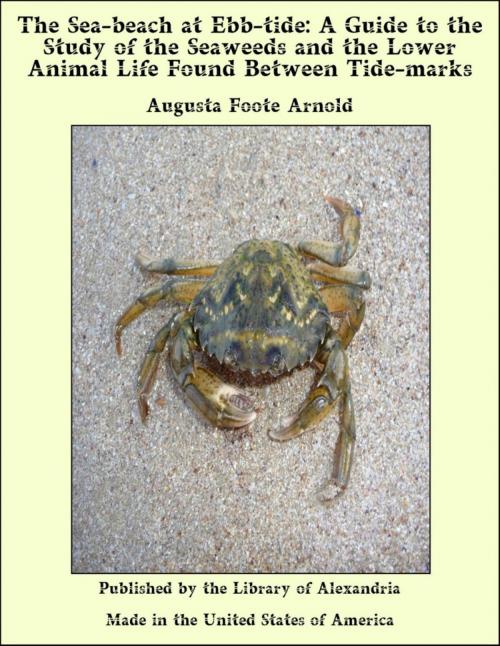The Sea-beach at Ebb-tide: A Guide to the Study of the Seaweeds and the Lower Animal Life Found Between Tide-marks
Nonfiction, Religion & Spirituality, New Age, History, Fiction & Literature| Author: | Augusta Foote Arnold | ISBN: | 9781465588548 |
| Publisher: | Library of Alexandria | Publication: | March 8, 2015 |
| Imprint: | Language: | English |
| Author: | Augusta Foote Arnold |
| ISBN: | 9781465588548 |
| Publisher: | Library of Alexandria |
| Publication: | March 8, 2015 |
| Imprint: | |
| Language: | English |
This volume is designed to be an aid to the amateur collector and student of the organisms, both animal and vegetable, which are found upon North American beaches. In it are described many invertebrates and some of the more notable varieties of seaweeds, and each individual is given its proper place in the latest classification. The technicality of classification or scientific grouping may at first seem repellent, but it in reality makes the study of these objects more simple; and a systematic arrangement has been adopted in the belief that it is the easiest as well as the only satisfactory way of becoming familiar with the organisms described. Without it a very confused picture of separate individuals would be presented to the mind, and a book like the present one would become a mere collection of isolated scraps of information. Morphology, or the study of structure, has been touched upon just enough to show the objects from the biologist's point of view and to enable the observer to go a little beyond the bare learning of names. Scientific names have been used from necessity, for the plants and animals of the beach are so infrequently observed, except by scientific people, that but few of them have common names; and, as a matter of fact, the reader will find that a scientific name is as easily remembered as a common one. Technical phraseology has, however, been avoided as much as possible, even at the expense of conciseness and precision; where it has been used, care has been taken to explain the terms so that their meaning will be plain to every one. A general glossary has been omitted, but the technical terms used have been indexed. The illustrations will bear the use of a hand-glass, and this will often bring out details which cannot well be seen by the unaided eye.
This volume is designed to be an aid to the amateur collector and student of the organisms, both animal and vegetable, which are found upon North American beaches. In it are described many invertebrates and some of the more notable varieties of seaweeds, and each individual is given its proper place in the latest classification. The technicality of classification or scientific grouping may at first seem repellent, but it in reality makes the study of these objects more simple; and a systematic arrangement has been adopted in the belief that it is the easiest as well as the only satisfactory way of becoming familiar with the organisms described. Without it a very confused picture of separate individuals would be presented to the mind, and a book like the present one would become a mere collection of isolated scraps of information. Morphology, or the study of structure, has been touched upon just enough to show the objects from the biologist's point of view and to enable the observer to go a little beyond the bare learning of names. Scientific names have been used from necessity, for the plants and animals of the beach are so infrequently observed, except by scientific people, that but few of them have common names; and, as a matter of fact, the reader will find that a scientific name is as easily remembered as a common one. Technical phraseology has, however, been avoided as much as possible, even at the expense of conciseness and precision; where it has been used, care has been taken to explain the terms so that their meaning will be plain to every one. A general glossary has been omitted, but the technical terms used have been indexed. The illustrations will bear the use of a hand-glass, and this will often bring out details which cannot well be seen by the unaided eye.



![Cover of the book [19th Century Actor] Autobiographies by Augusta Foote Arnold](https://www.kuoky.com/images/2015/march/300x300/9781465503732-TEET_300x.jpg)











